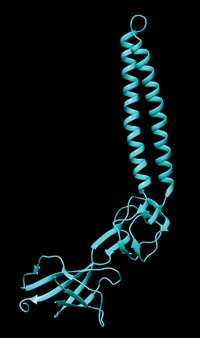Advertisement
Grab your lab coat. Let's get started
Welcome!
Welcome!
Create an account below to get 6 C&EN articles per month, receive newsletters and more - all free.
It seems this is your first time logging in online. Please enter the following information to continue.
As an ACS member you automatically get access to this site. All we need is few more details to create your reading experience.
Not you? Sign in with a different account.
Not you? Sign in with a different account.
ERROR 1
ERROR 1
ERROR 2
ERROR 2
ERROR 2
ERROR 2
ERROR 2
Password and Confirm password must match.
If you have an ACS member number, please enter it here so we can link this account to your membership. (optional)
ERROR 2
ACS values your privacy. By submitting your information, you are gaining access to C&EN and subscribing to our weekly newsletter. We use the information you provide to make your reading experience better, and we will never sell your data to third party members.
Biological Chemistry
Human Norovirus Hitches Ride On B Cells
Scientists find the virus responsible for intestinal illness needs bacteria to infect human host
by Elizabeth K. Wilson
November 10, 2014
| A version of this story appeared in
Volume 92, Issue 45
Forty years after they identified the highly contagious intestinal pathogen norovirus, scientists now have finally learned how the virus infects its hosts and can culture it in the lab (Science 2014, DOI: 10.1126/science.1257147). This advance should greatly hasten the understanding of human norovirus’s workings and may lead to future treatment strategies. Stephanie M. Karst and Melissa K. Jones of the University of Florida and their colleagues hypothesize that the virus attaches itself to histoblood group antigens that dot the surface of the enteral bacteria Enterobacter cloacae. The bacteria cross the human intestinal membrane, taking the virus with them, where the virus can then infect underlying B cells. The group identified the phenomenon when they were able to culture human norovirus present in fecal matter from an infected person—which also contained bacteria—in B cells. Attempts to grow pure virus extracted from the samples failed. This tagalong strategy has been recognized in other viruses, including polio, that also call on intestinal bacteria for help in infecting humans. In addition to facilitating norovirus study, the new work adds to the growing recognition of the importance of microbial communities, and their relationships with viruses, in human biology.





Join the conversation
Contact the reporter
Submit a Letter to the Editor for publication
Engage with us on Twitter